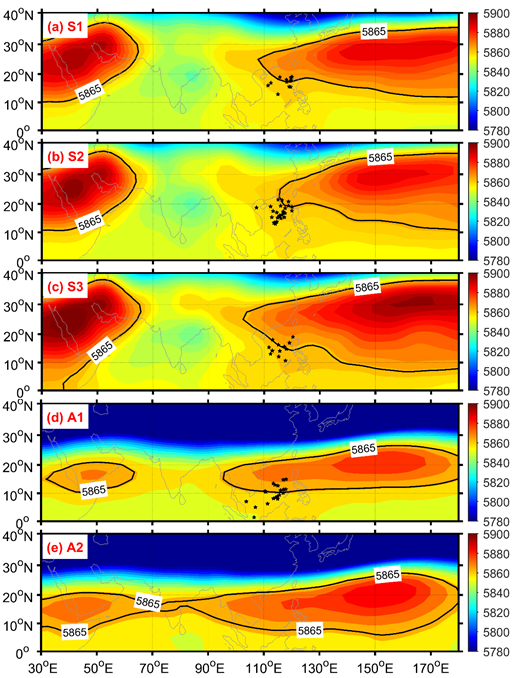On June 5th, Li Hong, a Ph.D. student in the Department of Earth System Science (DESS), published a paper inJournal of Geophysical Research – Atmosphere, a high-impact journal of geosciences, entitled “Subtropical High affects interdecadal variability of tropical cyclone genesis in the South China Sea”. The corresponding author of the paper is Prof. Xu Fanghua in DESS. Dr. Sun Jingru, Prof. Lin Yanluan, Prof. Jonathon Wright in DESS are coauthors. The paper shows the interdecadal change of Tropical Cyclone genesis frequency (TCGF) in the South China Sea is closely related to the east‐westward movement of the subtropical high (SH).
Over the South China Sea (SCS), intense tropical cyclones (TCs) activity in summer and autumn threatens surrounding coasts. In this paper, Interdecadal variability of TC genesis in the SCS during 1982–2015 is investigated using observations and atmospheric reanalysis data. TC genesis primarily occurs in the northern SCS (north of 13 °N) in July–September (summer), while in the southern SCS (south of 13 °N) in October–December (autumn). The TC genesis location is consistent with the climatological distribution of TC genesis potential index. Noticeably, the TC genesis frequency (TCGF) is relatively low in 1982–1993 and 2003–2015 while relatively high in 1994–2002 in summer in the SCS. In autumn, the TCGF shows an abrupt transition from high to low in the early 2000s in the SCS. It is found that such interdecadal change of TCGF is closely related to the east‐westward movement of the subtropical high (SH). When the SH is close to the SCS, large‐scale air subsidence, low‐level divergence, negative vorticity, and high pressure are prominent and inhabit TC genesis in the SCS. On the contrary, when the SH moves away from the SCS, environmental conditions become more favorable for TC genesis. In addition, the localized atmospheric intraseasonal variability can affect TCGF at interdecadal time scales as well.

The composite maps of the 500‐hPa geopotential height (gpm) and locations of TCs genesis (black pentagram) in periods of (a) S1 (summer, 1982–1993), (b) S2 (summer, 1994-2002), (c) S3 (summer, 2003–2015), (d) A1 (autumn, 1982-2005), and (e) A2 (autumn, 2006-2015). S1, S3, A2 are inactive TC periods, and S2, A2 are TC periods.
Li Hong is a 2ndyear Ph.D. student in DESS. His research interest is the interaction of ocean and subtropical high.
fulltext link:https://agupubs.onlinelibrary.wiley.com/doi/10.1029/2018JD029874